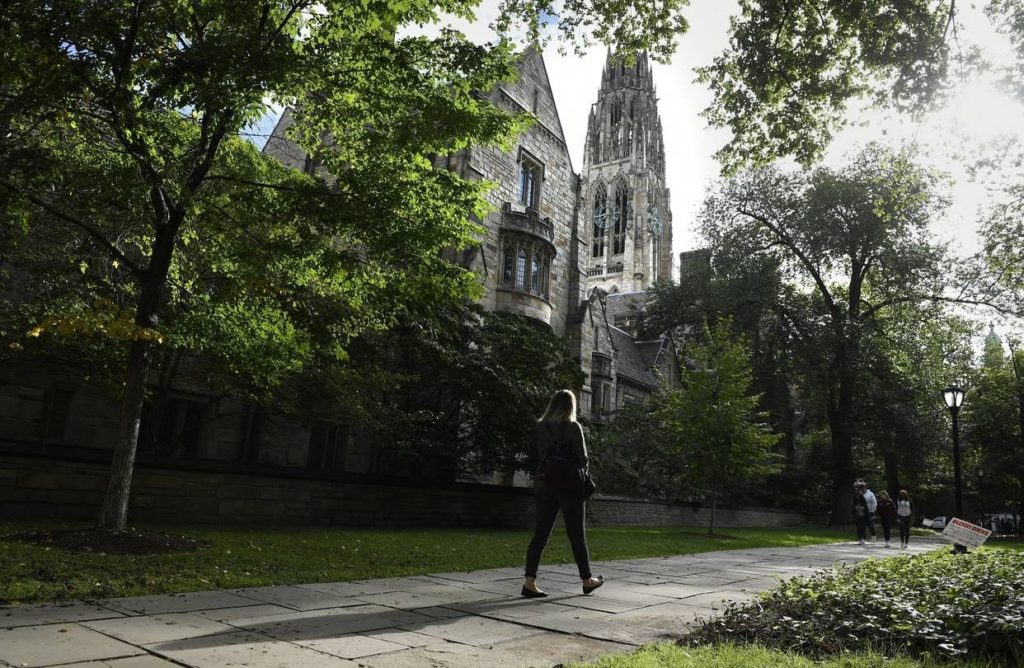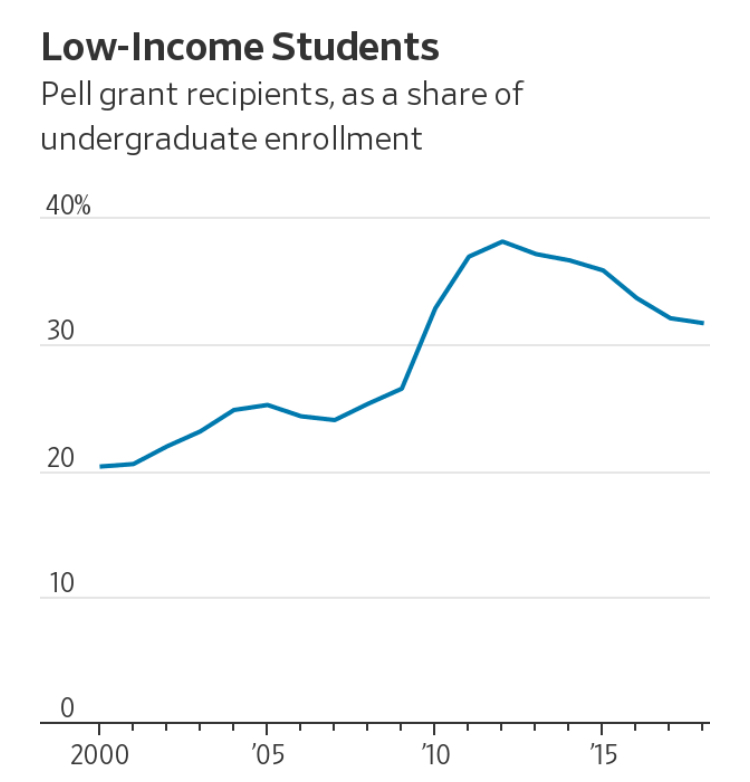Top Colleges Are Enrolling More Students From Low-Income Homes (#GotBitcoin?)

A major push to increase enrollment of lower-income students at the nation’s top colleges and universities is showing some early signs of success. Top Colleges Are Enrolling More Students From Low-Income Homes
Yale, Princeton, UC Irvine and others enroll more under Bloomberg Philanthropies program.
Since a public effort called the American Talent Initiative was launched two years ago, 96 schools have increased enrollment of low-income students by 7,291 students, a 3.5% gain, according to a report being released by the group Monday. While the number may be small, it bucks a nationwide trend of declining enrollment by such students in recent years.
The American Talent Initiative, backed by $4.7 million to date from Bloomberg Philanthropies, has grown from 30 schools to 108, with the goal of increasing by 50,000 the number of low- and middle-income students who enroll in and graduate from good colleges by 2025. Roughly 300 schools, all with six-year graduation rates of at least 70%, are eligible to sign on.
The schools are measuring low-income enrollments by looking at how many students qualify for federal Pell grants, which tend to go to those whose families earn below $40,000. The initiative focuses on those students, as well as some whose families earn slightly more.

The Bloomberg money largely covers organizational costs to run the coalition. Schools must raise money for scholarships and other programs once students make it to campus.
Shifting from merit-based to need-based financial aid, appealing to military veterans and recruiting more community-college graduates have proved among the tactics schools are employing to increase enrollment among lower-income students.
The University of California, Irvine, increased by nearly 900 the number of Pell students it enrolled in the past two years, the biggest gain for any single institution. That school expanded its class size and almost doubled its pipeline of community-college transfers, tapping a population that tends to come from lower-income backgrounds. Nearly four in 10 students at Irvine receive Pell funding.
“The country really needs institutions that are true to the American dream of social mobility, of authentic opportunity,” said UC Irvine Chancellor Howard Gillman. “It doesn’t need institutions that are there to reproduce privilege.”
Fordham University, Georgetown University and others have also pledged to expand transfer agreements with community colleges, according to the report.
Some schools, including Princeton University and Yale University, are posting gains in Pell enrollment in part by increasing their undergraduate student populations.
In the first two years, 96 schools that provided data, including Princeton and the University of Michigan, increased their combined enrollment of Pell-eligible students to 217,541 from 210,250.
The share of students who received Pell grants stayed at 25% across public-university member schools, and rose by one point, to 17%, at private institutions between the 2015-16 and 2017-18 academic years. Many of the schools increased their overall enrollments at the same time their Pell numbers rose.
Currently, more than half of students at schools with 70%-plus graduation rates come from families in the top 20% of the nation’s income distribution, according to the report. Published tuition, fees, room and board at many elite private schools now top $65,000 a year, though many students pay far less.
Critics say that top schools should be able to open their doors wider, faster. The use of merit aid to appeal to families who could pay full freight, and preference for legacy applicants, continue to thwart such initiatives, some say.
“It’s an uphill climb for schools to make this a real priority because it’s not really what’s rewarded,” said Stephen Burd, a senior policy analyst at New America, a liberal-leaning think tank, adding that prestige and revenue are rewarded more.
Related Article:
Fewer International Students Heading To The U.S. (#GotBitcoin?)
Go back
Leave a Reply
You must be logged in to post a comment.